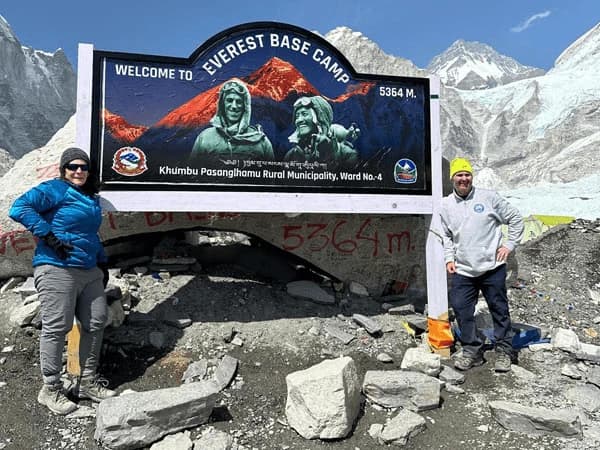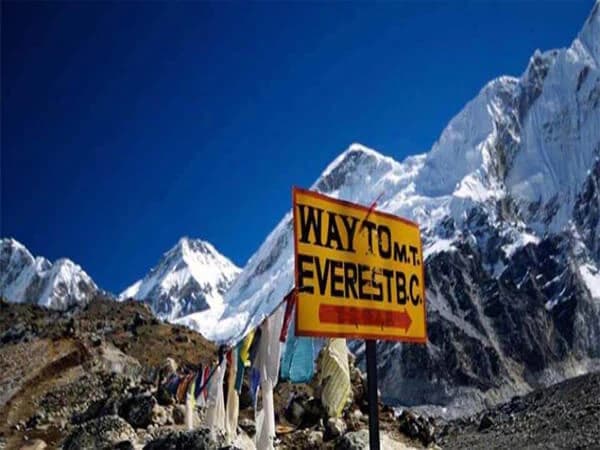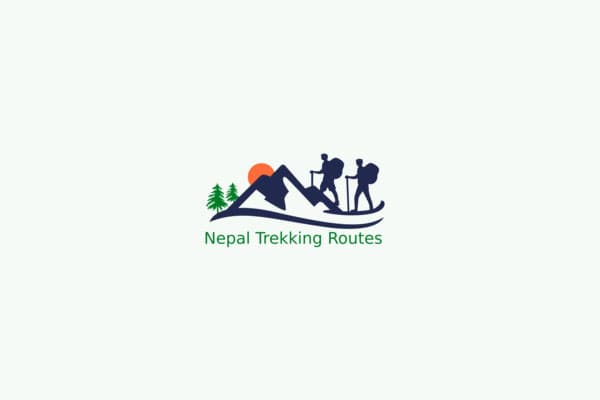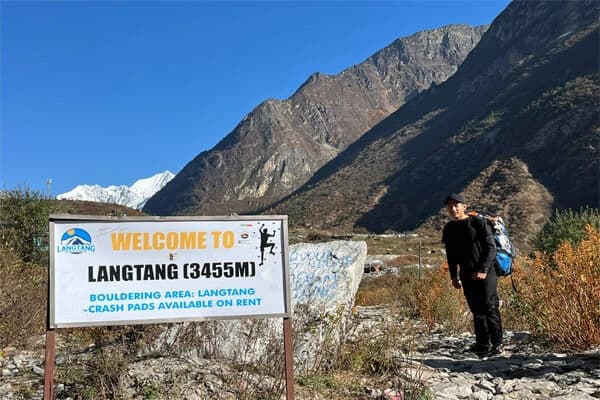The Mount Everest Marathon, which begins at Everest Base Camp and descends along difficult Himalayan terrain, is the highest and most daring event in the world. It offers runners breathtaking views of Everest and the Khumbu region while fusing endurance, adventure, and cultural immersion. The marathon honors the Sherpa culture and the spirit of the mountains in addition to being a physical challenge. It is more than simply a race; it is a voyage through some of the most beautiful scenery on earth, an unforgettable test of strength, determination, and a sense of connection to the natural world.
Everest Marathon: The World’s Highest and Most Adventurous Race
The Mount Everest Marathon is sometimes referred to as the highest and riskiest long-distance event in the world. It is a remarkable combination of endurance, altitude, and Himalayan scenery. This event is officially called the Tenzing Hillary Everest Marathon. It honors Sir Edmund Hillary and Tenzing Norgay Sherpa's historic first climb of Mount Everest on May 29, 1953. This incredible course begins close to the Everest Base Camp at an elevation of roughly 5,364 meters and ends at Namche Bazaar. It brings together competitors from all over the world each year.
The Everest Base Camp Marathon is a test of endurance, willpower, flexibility, and respect for the mountains. Surrounded by the highest peaks in the world, runners navigate difficult trails, slippery descents, and suspension bridges. It is a special occasion that honors the magnificent scenery of Nepal as well as human resiliency.
The Tenzing Hillary Everest Marathon is unique because it combines environmental awareness, cultural immersion, and athletic challenge. Runners simultaneously experience the magnificence of the Himalayas and the spirit of the Sherpa people. The Everest Marathon is the ultimate marathon above the sky, and this blog delves deeply into its history, preparation, and experience.
The Spirit of the Everest Marathon
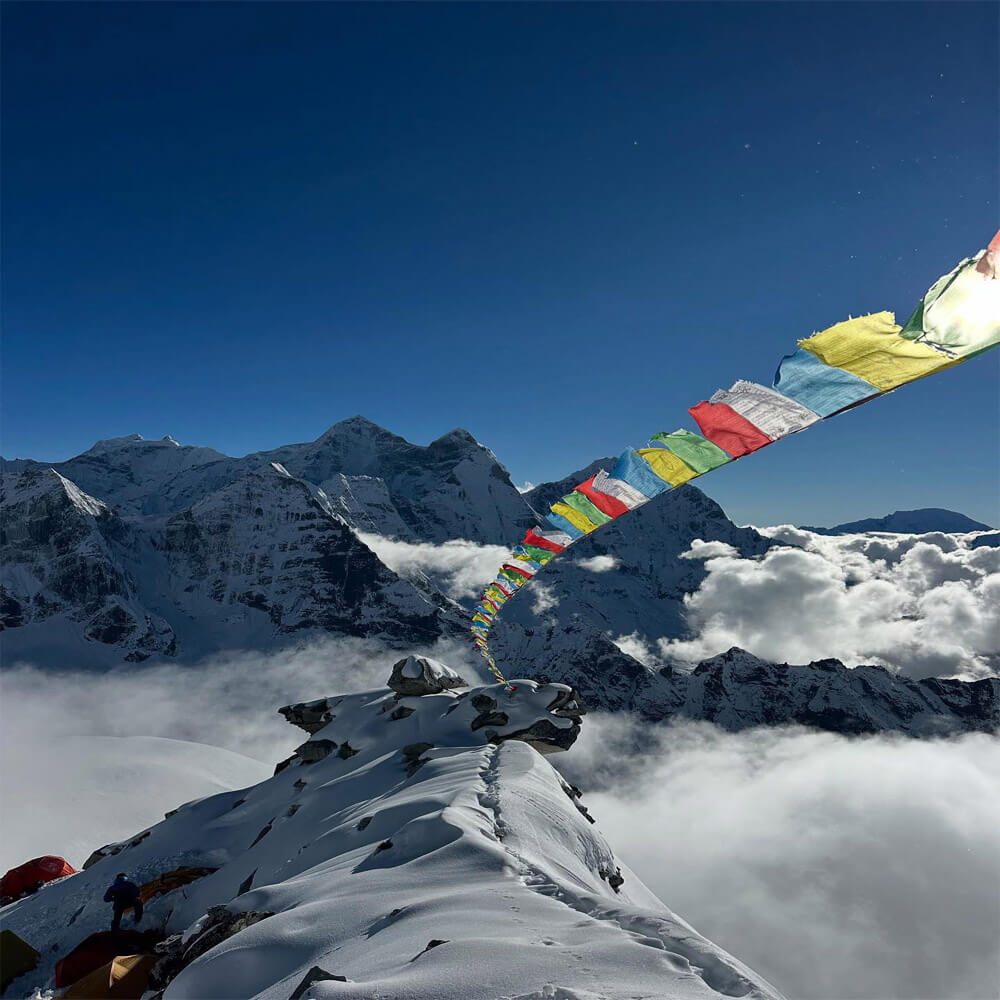
The Everest Marathon is much more than just a marathon. It is a celebration of human spirit, endurance, and adventure against the most breathtaking background on earth. Often referred to as the World's highest marathon, this remarkable event draws runners from all over the world. They push themselves in the heart of the Himalayas by fusing intense physical challenge with cultural immersion.
A Race That Defines Adventure Running in Nepal
The Everest Marathon is the ultimate representation of adventure running in Nepal for many. It is about appreciating the unpredictable beauty and challenge of high-altitude terrain, not just about finishing. From Everest Base Camp, runners descend through rocky terrain, glaciers, and Sherpa villages to Namche Bazaar. Every step requires focus and perseverance because the terrain is continuously changing, ranging from ice slopes to forest trails to suspension bridges.
In contrast to conventional city marathons, this one requires runners to cope with severe weather, uneven terrain, and thin air. It is where mountaineers and endurance athletes come together. Every breath serves as a reminder to participants that this is an adventure of willpower, discipline, and respect for the natural world rather than just a race.
Blending Culture with Endurance
Strong cultural ties are another distinctive feature of Nepal marathon race. The event honors climbing history of Nepal and is scheduled around May 29, the anniversary of famous ascent of Mount Everest by Tenzing Norgay and Sir Edmund Hillary. In order to acclimate, competitors trek to Everest Base Camp for over two weeks prior to the competition. Runners travel through Sherpa villages, stop at historic monasteries, and experience the rhythm of Himalayan life.
The locals contribute significantly to this marathon by providing hospitality, encouraging the runners, and sharing traditions that deepen the emotional impact of the event. The occasion promotes intercultural friendships and showcases Nepal's distinctive combination of adventure and spirituality.
Pushing Limits in the High Altitude Marathon
Running a high altitude marathon means challenging oneself both mentally and physically. Compared to sea level, oxygen levels drop by over 50%, necessitating slower pace and more endurance. To get ready for the difficulties of cold weather, rough terrain, and unpredictable circumstances, participants train for months or even years.
The body's reaction to altitude, which includes exhaustion, muscle strain, and dyspnea, adds another level of difficulty. However, the magnificent views of the Himalayas and the satisfaction of overcoming such terrain make all the difficulties worthwhile. Ordinary runners become great adventurers because of this harsh climate.
Beyond Competition: A Journey of Self-Discovery
The World's highest marathon is more about realizing one's potential than it is about competing with others. Each participant runs for the narrative the journey of perseverance, humility, and wonder rather than just speed. With the sounds of yak bells, fluttering prayer flags, and cheerful locals echoing through the mountains, the trail itself feels alive.
Completing the Everest Marathon is a mental and physical victory. It teaches patience, thankfulness, and resilience, which are fundamental qualities of adventure running in Nepal. For many, it turns into a spiritual experience, a reminder that the Himalayas are a climbing destination as well as a sacred place for dreamers who dare to run among the highest peaks in the world.
Everest Marathon Route Overview: From Mount Everest Base Camp to Namche Bazaar
The Everest Marathon is an extreme running challenge not just a marathon that takes place in the midst of the Himalayas. Starting at the Everest Base Camp (5,364 meters), one of the most famous locations on Earth, this amazing Himalayan marathon event descends over rocky trails, high-altitude communities, and stunning scenery until it reaches Namche Bazaar, the vibrant Sherpa city. Few events will match this route's combination of natural beauty, cultural diversity, and physical stamina across a full marathon distance of 42.195 kilometers.
Starting Point of Mount Everest Marathon: Everest Base Camp (5,364 meters)
The competition begins at Everest Base Camp, where climbers set out to reach the top of the tallest peak in the world. This marathon at 5,364 meters is one of the hardest endurance tests on Earth because the oxygen levels are around half of what they are at sea level. In order to help their bodies adjust to the thin air, runners spend several days acclimating to the area prior to the race, frequently trekking from Lukla to the Base Camp. The crisp, chilly air, the view of the surrounding peaks, and the vast quiet of the Himalayas create an almost supernatural feeling when the race starts.
The Downhill Challenge: Trails of Ice and Rock
From the beginning, runners descend rugged, steep routes covered with loose stones and occasionally covered in ice or snow. The route travels through locations like Gorak Shep, Lobuche, and Thukla, where uneven terrain and glacial streams put endurance and balance to the test. The course has a number of high climbs and tricky portions that need cautious footwork, even though the race is generally downhill. Surviving an extreme running challenge while preserving rhythm and concentration in a dynamic setting is more important than simply jogging.
Passing Through Sherpa Villages and Suspension Bridges
Following the higher glacier parts, racers pass through picturesque Sherpa communities like Pangboche, Tengboche, and Khumjung as well as alpine meadows. The trail spans steep gorges sculpted by raging rivers and passes over multiple suspension bridges covered in prayer flags. Local people support the participants along the route with smiles and words of encouragement. The Himalayan marathon event is unique because of this human warmth in the middle of untamed wilderness. In addition to being a physical adventure, it offers runners a glimpse into the everyday lives of mountain communities that flourish in one of the world's most isolated areas.
Finishing Point of Mount Everest Marathon: Namche Bazaar
Namche Bazaar (3,440 meters), a thriving commercial town and the entry point to the Everest region trek, is where the race ends. Runners have now plummeted about 2,000 meters from the starting point, but the trip is far from simple. Many people characterize the last stretch as both emotionally and physically taxing. In front of enthusiastic villagers and other adventurers, crossing the finish line here is an unforgettable moment of victory.
The Marathon from Everest Base Camp is a journey through some of the world's most breathtaking and difficult landscapes, not just a sporting event. Each runner who finishes it receives not just a medal but also a tale of bravery, tenacity, and a strong bond with the Himalayas. The Everest Marathon is the tallest and most remarkable race in the world because of this.
Altitude Challenge and Physical Preparation
Running the Mount Everest race is about more than simply endurance; it is about flourishing in one of the world's harshest settings. The Everest Marathon is a true high-altitude sports event that requires both mental toughness and physical fitness. It is one of the most difficult yet rewarding running adventures in the Himalayas because of the altitude, erratic weather, and difficult trails.
Understanding the Altitude Challenge
At Everest Base Camp, when oxygen levels are over 50% lower than at sea level, the race starts. Altitude sickness can result from even a minor acclimatization error, and every breath feels heavier. This race is more about strategy and adaptation than speed because the thin air tests cardiovascular capacity and recovery skills. Before the race, runners must progressively acclimate by trekking from Lukla to Base Camp for many days. This acclimatization phase lowers the chance of acute mountain sickness and aids the body in adjusting to low oxygen levels.
Physical Preparation and Training
An organized exercise regimen is necessary to prepare for the Everest Marathon, ideally beginning three to six months in advance. To replicate the steep climbs and descents of Himalayan terrain, endurance athletes should concentrate on long-distance runs, hill sprints, and strength training. Hypoxic chambers or training at a modest altitude can help prepare the body for lower oxygen levels.
Because the route includes rough trails, glacial moraines, and steep downhill stretches that test balance and stability, core and leg fitness are essential. To increase stamina without straining muscles, many participants also include cross-training exercises like cycling, trekking, or stair climbing. To preserve mobility and avoid injury, flexibility and recovery exercises, such as yoga or stretching, are equally crucial.
Mental Strength and Strategy
The Mount Everest race is a mental challenge that goes beyond physical preparedness. The harsh circumstances cold winds, difficult paths, and extended periods of seclusion require concentration and perseverance. Runners need to learn to pay attention to their bodies and pace themselves. Carrying energy gels, electrolytes, and high-calorie snacks guarantees sustained energy throughout the marathon. Hydration and nutrition control are crucial.
Breathing techniques, meditation, and visualization can all help runners maintain composure under pressure. Patience conserving energy early and finishing strong is a key component of experienced participation.
The accomplishment of this running adventure in the Himalayas represents courage and determination. It is about overcoming altitude, geography, and nature itself on a personal level rather than breaking records. Those who successfully complete the "high-altitude sports event" return with enduring memories, increased resilience, and a deep appreciation for the strength and beauty of the Himalayas.
Registration, Rules, and Entry Requirements for the Everest Marathon
For any endurance athlete, taking part in the Everest Marathon is a once-in-a-lifetime opportunity to combine the breathtaking grandeur of the Himalayas with a high-altitude challenge. To guarantee a fun and safe event, careful preparation and knowledge of eligibility, rules, and registration are essential.
Everest Marathon Registration Process
Registration for the Everest marathon opens several months in advance, typically via the official event website or approved adventure sports organizations in Nepal. A filled-out application, personal information, a medical history, and documentation of previous running or endurance event participation are all required of participants. Due to the restricted number of spots, early registration is advised because the race draws international runners and high-altitude enthusiasts from all over the world. Permits, lodging, transportation from Lukla or Kathmandu to Everest Base Camp, and race entry are all usually included in registration fees. Agencies frequently offer whole packages, making it simpler for new participants to concentrate on training and acclimation by handling logistics, equipment transportation, and guided support.
Eligibility and Health Requirements
The Everest Marathon is an endurance race in the mountains, thus competitors need to be in good physical shape and ready for challenging circumstances. Cardiovascular and high-altitude fitness evaluations are part of the required medical clearance. Trail running or long-distance endurance competitions, ideally in hilly areas, should be prior experience for runners. Participants must normally be between the ages of 18 and 65, though more experienced athletes may be exempt.
Rules and Trail Guidelines

On the Everest region's high-altitude paths, safety is of utmost importance. Participants must adhere to timing checkpoints and follow designated routes. The competition places a strong emphasis on Trail Running Nepal ethics, which include respecting local communities, reducing environmental effect, and sticking to designated routes. Disqualification may follow infractions like littering or using unapproved shortcuts. Since organizers supply hydration, first-aid stations, and direction along the course, the usage of personal support teams is typically limited.
Mount Everest Marathon Training and Preparation
Participants should combine high-altitude training, cardiovascular endurance, and trekking with heavy loads in order to finish the race. To avoid altitude sickness, the plan includes days for acclimatization. Running across difficult terrain, suspension bridges, and steep ascents requires both physical and mental preparation, which is ensured by experienced trainers or trekking company.
Runners can completely embrace the adventure and turn the Everest Marathon into a life-changing trek through the highest mountains in the world. They can follow these instructions for Everest marathon registration, fulfill qualifying requirements, and understand the regulations.
Marathon Categories and Events
With choices for runners of all skill levels, the Everest Marathon is more than simply a race; it is an amazing Himalayan running experience that combines adventure and endurance on the Everest Base Camp trail. The event is divided into several categories to accommodate both adventure seekers and competitive athletes who want to experience the exhilaration of running in some of the highest settings on earth.
Full Marathon (42.195 km)
The entire marathon begins at Everest Base Camp, which is located at an elevation of 5,364 meters (17,598 feet), and descends to Namche Bazaar over a picturesque but difficult path. As racers negotiate rough slopes, glacier tracks, and steep descents, this route puts their physical endurance and mental stamina to the test. The full marathon is regarded as the ultimate challenge since it tests runners' stamina to the maximum while rewarding them with stunning vistas of Mount Everest, Lhotse, Nuptse, and Ama Dablam. To successfully complete this challenging category, proper acclimatization and high-altitude training are crucial.
Half Marathon (21 km)
For runners who wish to enjoy the thrill of high-altitude trekking without the intensity of the entire course, there is a half marathon. This category, which offers a combination of mild ascents and descents, usually begins around Dingboche or Lobuche, lower down the Everest Base Camp trekking trail. It is the ideal introduction to Himalayan marathon running since participants may take in the beautiful scenery, engage with Sherpa communities, and experience the exhilaration of running at elevations higher than 4,000 meters.
Ultra and Endurance Categories
The ultra category goes beyond the conventional marathon distance for elite runners looking for difficult challenges. This category, which includes challenging terrain, glaciers, and high-altitude passes, places a strong emphasis on stamina, navigational abilities, and mountain experience. In order to prepare for erratic weather and difficult terrain, competitors frequently train for months in similar high-altitude settings.
Age Groups and Participation Options
Both young athletes and seasoned runners can compete in the marathon because it is open to a wide range of age groups. While adventurers may opt for a non-competitive pace to enjoy the Himalayan scenery, serious runners compete for official timing. Local Sherpas frequently compete alongside foreign runners, offering motivation and highlighting the rich cultural legacy of the area.
Logistics and Support Team
Running is only one aspect of participating in the Everest Marathon; another is navigating a challenging high-altitude event that requires collaboration, endurance, and logistics. The event organizers make sure that all runners, professional or amateur, have a safe and effective experience. The logistics are organized with military precision, from acclimatization to race-day management.
Pre-Marathon Acclimatization and Trek to Base Camp
Participants follow a Nepal trekking and running adventure plan prior to the marathon, which entails a 10- to 14-day journey from Lukla to Everest Base Camp. This trip acts as a conditioning and acclimatization process. Trekkers progressively acclimate to the thin air as they pass through Namche Bazaar, Tengboche, Dingboche, and Gorakshep. Professional porters and guides take care of practicalities like lodging, meals, and luggage transportation so that runners may concentrate on getting their bodies and minds ready.
Because it reduces the chance of altitude sickness during the marathon, the acclimatization period is crucial. Medical personnel keep an eye on competitors' general health and oxygen levels to make sure everyone arrives at Base Camp prepared for the race.
Race-Day Organization and On-Ground Support
Coordination is essential on the day of the marathon. Starting at Everest Base Camp (5,364 m), the event descends to Namche Bazaar (3,440 m) along difficult terrain. Strategically positioned checkpoints and aid stations offer first aid, hydration, and refreshments along the course. An essential part of the support team, local Sherpas lead runners on challenging paths and make sure they are safe in the event of weather changes or exhaustion.
With oxygen supply, communication equipment, and emergency evacuation alternatives, a committed medical and rescue crew accompanies the race, prepared to help anyone in need. For severe cases, helicopter backup is also an option.
Marathon Training for Altitude and Logistics Support
Marathon training for altitude starts weeks or months before traveling to Nepal because the race is held at a very high altitude. It is recommended that participants engage in weight training, simulated altitude training, and long-distance running. To help runners modify their routines for Himalayan conditions, organizers frequently offer workshops and pre-race training guidelines.
The event crew is in charge of all logistics, including lodging, food, porters, transportation of racing equipment, and permits. Runners may completely concentrate on performance and the amazing landscape instead of worrying about logistics or planning thanks to this flawless cooperation.
The logistics and support staff are essentially the backbone of the Everest Marathon, transforming an extremely difficult marathon into a well-planned, safe, and unique Himalayan experience for each runner.
Weather and Best Time for the Everest Marathon
Understanding and adjusting to the high-altitude weather conditions that characterize the Himalayas is equally as important as stamina when running the Everest Marathon. The timing of the marathon is critical for both performance and safety because it takes place in one of the most unpredictable alpine conditions in the world.
Ideal Time: Celebrating Everest Day
Every year on May 29, the Everest Marathon honors Sir Edmund Hillary and Tenzing Norgay Sherpa's historic first ascent of Mount Everest in 1953. The pre-monsoon trekking season in Nepal ends in late May, when weather is at its most reliable, therefore this time was carefully considered. Trails are sufficiently dry for running, temps are mild, and the skies are usually clear.
During this time, daily temperatures at lower elevations, such as Namche Bazaar (3,440 m), range from 10°C to 15°C, but early morning temperatures at Everest Base Camp (5,364 m) can fall as low as -5°C to -10°C. Because of these circumstances, runners may take on the difficulty of high-altitude terrain without having to deal with bitter cold or a lot of snow.
Pre-Marathon Weather and Acclimatization
Participants usually trek from Lukla to Everest Base Camp for two to three weeks before to race day. This time allows them to acclimate and become acquainted with the circumstances of the trail. During this time, the weather might change quickly; mornings are frequently sunny and clear, while afternoons bring light clouds or sporadic snowflakes. Trekkers should wear layers of clothing with warm insulation inside and waterproof outer shells.
In order to prevent altitude sickness, participants can acclimate to thinner air and varying temperatures over acclimatization days in locations like Namche Bazaar, Dingboche, and Lobuche.
Weather Challenges During the Race
Mountain weather is very unpredictable even in late May. Particularly close to the Everest Base Camp start line, strong winds, unexpected snowfall, or temperature reductions are possible. The oxygen content of the thin air is over 50% lower than that of sea level, which makes breathing and endurance extremely difficult. Runners need to keep a steady pace, drink enough of water, and pay special attention to any physical problems.
Off-Season Considerations
Conditions get much more difficult beyond the scheduled event date. Winter (December–February) can be extremely cold with deep snow, while the monsoon season (June August) brings heavy rain and slippery trails. Therefore, the only practical times for safe and enjoyable involvement are May and occasionally October.
Finally, the Everest Marathon is genuinely the highest and most thrilling race in the world because of its late May schedule, which perfectly matches the area's best weather conditions balancing tolerable temperatures, stable trails, and cultural significance.
Cultural and Environmental Significance of the Everest Marathon
In addition to being an exciting sporting event, the Everest Marathon is a potent representation of Nepal's mountain history, Sherpa culture, and environmental awareness. Every stride runners take on this high-altitude race has greater significance, fusing ecological responsibility, cultural pride, and the sense of adventure.
Honoring Everest Day and the Spirit of the Himalayas
Traditionally, the marathon takes place on May 29, a significant day in the history of mountaineering since it commemorates the anniversary of Sir Edmund Hillary and Tenzing Norgay Sherpa's first successful ascent of Mount Everest in 1953. By scheduling the marathon for this event, the organizers honor the courage, tenacity, and cooperation that characterize Himalayan exploration.
In addition to pushing their physical boundaries, runners honor the fabled Sherpas, whose courage and leadership enable every Everest trip. The race takes on a ceremonial tone as a result of this sense of remembrance, making it a live homage to the history of climbing.
Empowering Local Communities
Local Sherpa and mountain communities immediately benefit from the Everest Marathon. Hundreds of locals get jobs and accolades during the festival, from porters and guides to hotel owners and craftspeople. Due to the close interactions between international participants and Sherpa customs, food, and lifestyle, the marathon also contributes to eco-tourism and cultural exchange. Building schools, health clinics, and trail maintenance in isolated Himalayan villages are just a few of the community development initiatives that frequently receive a portion of the marathon's earnings.This guarantees that local livelihoods benefit from tourism and adventure in the long run rather than merely in the short term.
Eco-Friendly Practices and Conservation Awareness

There are responsibilities when running in Sagarmatha National Park, a UNESCO World Heritage Site. In order to ensure that both participants and organizers maintain the delicate alpine ecosystem, the marathon places a strong emphasis on the "Leave No Trace" ethos.
Runners are urged to respect waste segregation guidelines, refrain from littering, and utilize reusable water bottles. After the event, organizers set up eco-checkpoints where porters collect and dispose of all rubbish. Additionally, educational workshops increase understanding of sustainable trekking methods, glacial melting, and climate change.
To maintain the purity of the Everest region, the event has embraced plastic-free zones, renewable energy use, and collaborations with conservation NGOs in recent years.
In the end, the Everest Marathon is a celebration of human spirit, ethnic harmony, and environmental stewardship rather than just a race. It is a singular example of how adventure tourism can improve communities while preserving the magnificent Himalayas by fusing athletic challenge with cultural respect and eco-awareness.
Tips for Participants and Spectators
Preparation and Training
The Everest Marathon preparation process starts months in advance. If at all possible, runners should practice altitude running, train on hilly terrain, and prioritize endurance over speed. Since oxygen levels are low at high heights, mental toughness is just as vital as physical preparedness. Before the marathon, acclimatization treks increase endurance and help avoid altitude sickness.
Gear and Essentials
Gloves, sunglasses, sunscreen, trail running shoes with decent traction, and lightweight, moisture-wicking apparel are essential. Because the weather and terrain conditions can vary quickly, bring energy gels and a hydration bag. Layering clothing gives you versatility when the temperature changes between Base Camp and Namche Bazaar.
Travel and Logistics
To acclimate to the altitude, arrive in Nepal early. Participants should bring extra funds for personal needs, but organizers often cover hotel, permits, and flights. It is advisable to make reservations through certified tour companies that are knowledgeable about Himalayan conditions.
Spectator Experience
While taking in expansive vistas of Everest, spectators can trek to Namche Bazaar or Tengboche to support racers. They should dress warmly and get ready physically as well. Along the trail, there are countless options for photographers.
Taking part in or watching the Everest Marathon is a once-in-a-lifetime opportunity to experience a unique blend of endurance, adventure, and Himalayan culture.
Mount Everest Marathon FAQs
What is the Everest Marathon?
The Everest Marathon is the world’s highest running event, starting from Everest Base Camp (5,364m) and ending at Namche Bazaar (3,440m). It combines adventure, endurance, and breathtaking Himalayan scenery, attracting runners from across the globe.
When does the Everest Marathon take place?
The marathon is held every year on May 29, the date marking the first successful Everest summit by Sir Edmund Hillary and Tenzing Norgay in 1953.
How do participants prepare for the altitude?
Runners usually join a three-week trekking and acclimatization program, trekking gradually to Base Camp to adjust to the thin air and avoid altitude sickness.
Who can participate in the race?
Anyone with good physical fitness and mountain running experience can join. There are three categories: full marathon (42 km), half marathon (21 km), and ultra-marathon (60 km).
Can I book the Everest Marathon through a local agency?
Yes, joining through a local company like Nepal Trekking Routes ensures experienced guides, acclimatization support, logistics, and a safe, organized adventure from Kathmandu to the finish line. It’s the best way to experience this extraordinary race with professional assistance.
Conclusion: Mount Everest Marathon
The Mount Everest Marathon, which combines athletics, adventure, and Himalayan culture, is the most difficult and spectacular event in the world. Starting at Everest Base Camp, runners must contend with thin air, difficult terrain, and breathtaking views of the highest peaks in the world. The spirit of perseverance and the strong bond with the Sherpa homeland are what really set it apart. It is a celebration of Nepal's mountain heritage and the fabled Everest mentality that goes beyond the physical difficulty. Participants can concentrate on the adventure itself because organized experiences with Nepal Trekking Routes guarantee safety, acclimatization, and smooth logistics. It is more than just a marathon; it is a transformative experience that challenges fortitude, respects the environment, and honors the spirit of the Himalayas.


